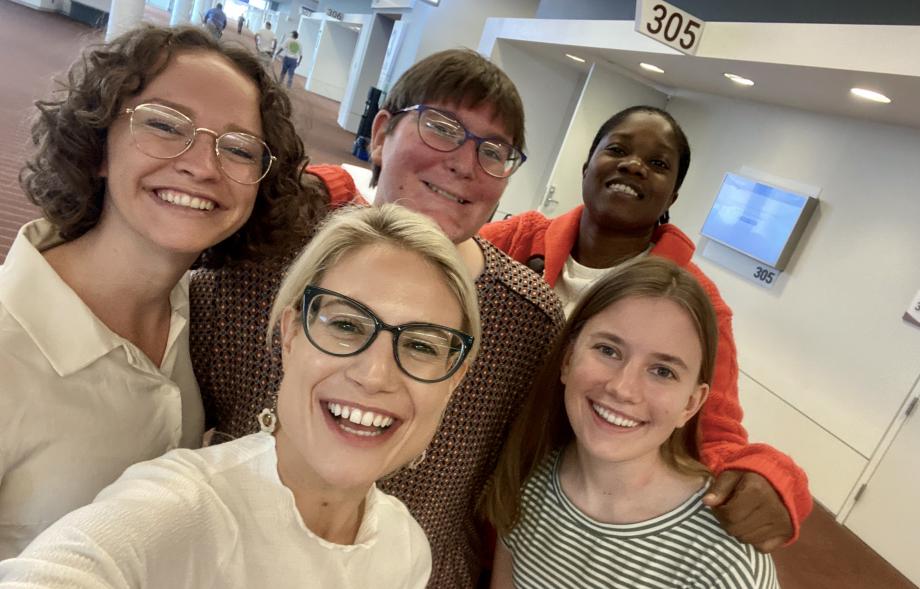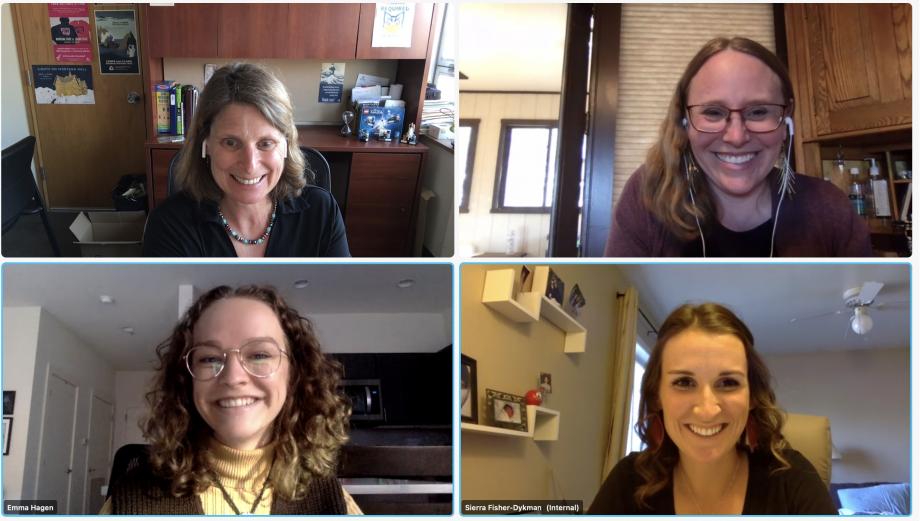Over the last year, a memory of my middle school science fair has been rolling around in my head. When I considered my project for the required 6th grade fair, I thought through several ideas and settled on a neuroscience experiment about how the human brain, for those who are not color blind, processes color. At the competition, I was awarded one of several Honorable Mentions. The reason that the judges, whom I perceived as experts in science, gave was that my project was “a very unique project, however, it wasn’t a hard science and therefore couldn’t win an award.” They considered my project a psychology project which wasn’t eligible for placement in the science fair. I did not compete in the optional science fairs in the next grades.
I was told that my science wasn’t enough. At the time, I didn’t distinguish this experience as a formative moment in my STEM identity. This event, along with others between 6th and 8th grade, contributed subconsciously to a lack of self-association in science and math. While I was told that I was good at these subjects by some adults, I didn’t feel as though I belonged by other adults (and some of my peers).

As a part of the 2022 NGCP Anniversary Fellowship, the fellowship leadership team of Katarina Lucas, Brenda Britsch, and Karen Peterson, developed a series of gender and racial equity trainings in science education. I gained so much perspective and insight from all of the trainings they prepared. Having tailored trainings with access to relevant and applicable research not only helped me understand the basics of equity in science education, but also what tactics to apply in order to excite girls about STEM.
One paper that particularly stood out to me was A Summary of Effective Gender Equitable Teaching Practices in Informal STEM Education Spaces (Hughes et al., 2020a). This literature review of 45 peer-reviewed articles focuses on K-16 formal and informal education settings and examines strategies to support and amplify girls' experience in STEM, particularly their STEM identities. The authors distinguished three factors that contribute to the definition of STEM identity, from prior research.
“STEM identity requires opportunities to develop interest and competence in STEM-related skills, perform these competencies, and be recognized by perceived experts (Carlone and Johnson, 2007). Youth must experience a sense of competence and opportunity for potential success in their chosen field and see value in these fields (Eccles, 2007). STEM identity development is both a reflection of how one perceives, positions, and aligns oneself with STEM, and how one is perceived and recognized by meaningful others (Calabrese Barton et al., 2013).” (Hughes et al., 2020a)
In this definition, they determine that STEM identity for girls is both generated by the individual, and how others perceive the individual. According to the research “Educators play an important role in helping (or hurting) girls, particularly girls of color, to see themselves as STEM people (Hughes et al., 2020b).” They go on to discuss the research showing how girls’ STEM experiences in middle school is the most formative time for their STEM identities.
The paper calls out six strategies that build on the SciGirls Seven Strategies (Billington et al., 2014), which foster, empower, and support girls’ association with and interest in the sciences. With this foundation, I learned how girls are affected by their STEM experiences and how to make sure they feel included. Through the following trainings, I learned additional tools for how I can play an effective role in order to engage girls in STEM.
The information from this paper, and the trainings in general, also validated and gave me the language to identify my experiences in STEM. In my adult age, I feel as though I can build upon my STEM identity even further, with more clarity of the experiences from my youth like the one from my 6th-grade science fair. The trainings also expanded my knowledge of how intersectional factors differently affect girls and women of color in STEM. I recognize and understand the weight of being a role model and a mentor.

These trainings were only a part of the fellowship experience. Other parts of my NGCP Fellowship included networking with the NGCP Montana Collaborative leadership, data analysis for the 2022 NGCP Annual Survey, attending and presenting at the NGCP Collaboration Institute, and speaking as a part of a panel for the NGCP webinar series. I’m so grateful to NGCP for this opportunity!
Billington, B., Britsch, B., Karl, R., Carter, S., Freese, J., and Regalla, L. (2014). SciGirls Seven: How to engage girls in STEM. Minneapolis, MN: Twin Cities Public Television. http://www.scigirlsconnect.org/wp-content/uploads/2016/07/ScigirlsSeven_Print.pdf
Calabrese Barton, A., Kang, H., Tan, E., O’Neill, T. B., Bautista-Guerra, J., and Brecklin, C.(2013). Crafting a future in science: Tracing middle school girls’ identity work over time and space. American Educational Research Journal, 50(1), 37-75.
Carlone, H.B., and Johnson, A. (2007). Understanding the science experiences of successful women of color: Science identity as an analytic lens. Journal of Research in Science Teaching, 44(8), 1187-1218.
Eccles, J. S. (2007). Where are all the women? Gender differences in participation in physical science and engineering. In S. J. Ceci and W. M. Williams (Eds.), Why aren’t more women in science? Top researchers debate the evidence (pp. 199-210). Washington, DC: American Psychological Association.
Hughes, R., Schellinger, J., Billington, B., Britsch, B., & Santiago, A. (2020). A Summary of Effective Gender Equitable Teaching Practices in Informal STEM Education Spaces. The Journal of STEM Outreach, 3(1). https://doi.org/10.15695/jstem/v3i1.16.
Hughes, R., Schellinger, J., and Roberts, K. (2020). The Role of Recognition in Disciplinary Identity for Girls. Journal of Research on Science Teaching. DOI:10.1002/tea.21665

Emma Hagen
Emma Hagen (she/her) is a science enthusiast, early career leader, and extroverted connector. She currently works as a Program Specialist for the UCAR Center for Science Education (SciEd). UCAR SciEd serves as an educational center (and hosts the Mesa Lab Visitor Center) for the National Center for Atmospheric Research (NCAR) located in Boulder, Colorado. Prior to this role, she was a Program Specialist for the GLOBE Program, a NASA-funded, international, STEM education effort. Emma completed the NGCP Anniversary Fellowship program in December of 2022.